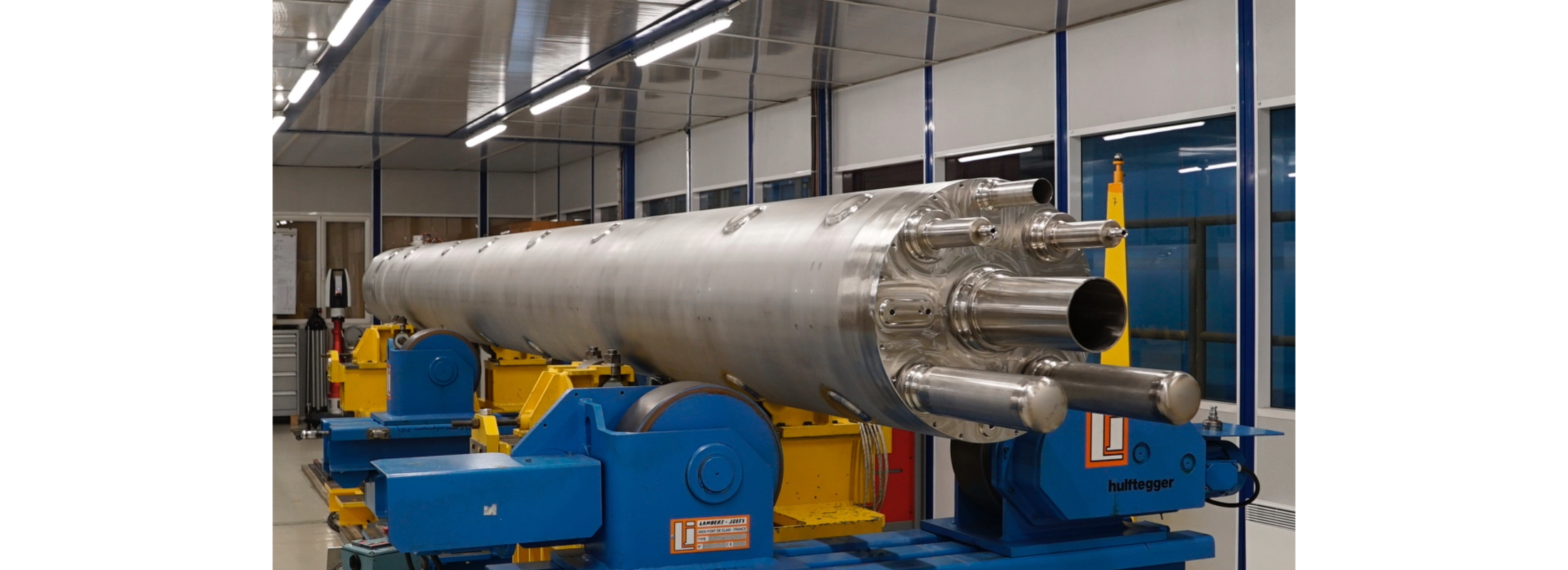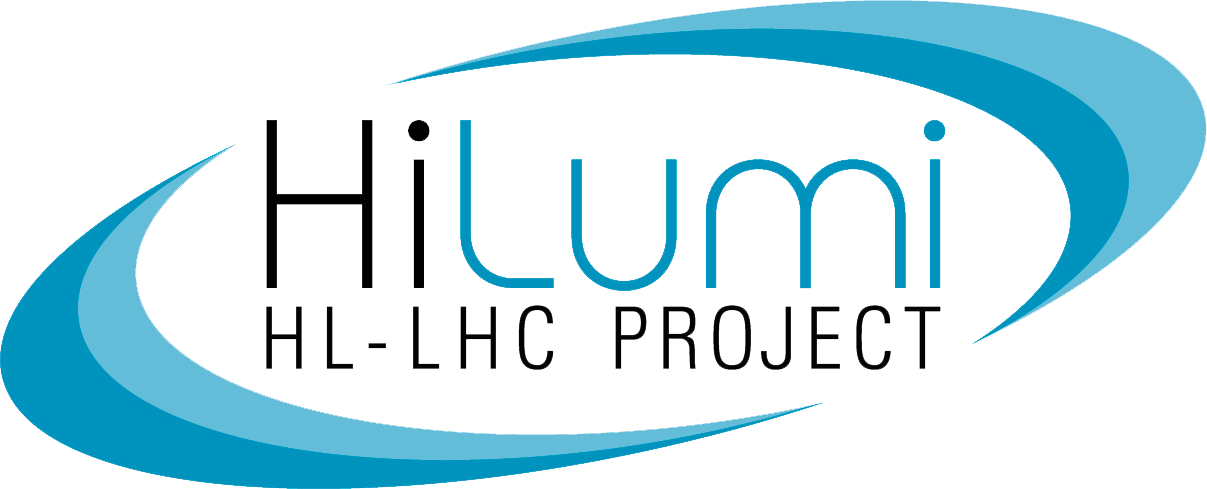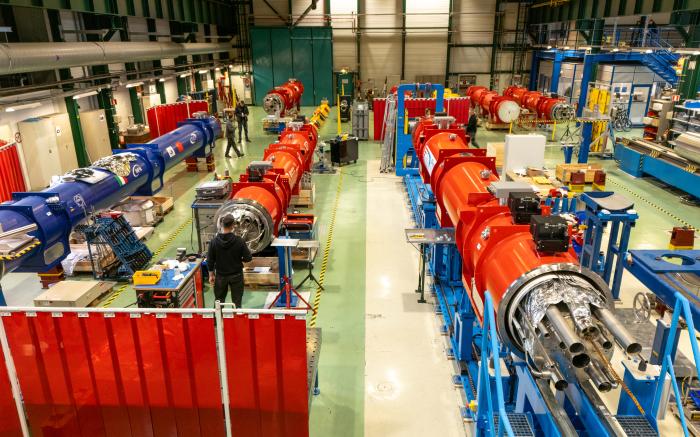By Florence Thompson and Susana Izquierdo Bermudez (CERN)
In the last couple of months, CERN has received three magnet shipments for the HL-LHC project: the first D1 series cold mass, the sixth series D2 corrector magnet, and the second series US-AUP cryoassembly.
The first of the six D1 separation and recombination dipole (MBXF) magnets from KEK, Japan, arrived near the end of last year. The series cold masses are manufactured by Hitachi, under the contract steered by KEK as an in-kind contribution from Japan. After cryostating at CERN, the D1 will be cold tested in its final configuration in SM18 this spring.

Figure 2. D1 first series cold mass, after delivery in December 2024, in the cold mass finishing zone at CERN. Photo: Florence Thompson / CERN
MCBRD06 is the sixth nested canted-cosine-theta series magnet that will become part of the D2 cryoassembly, responsibility of IHEP as an in-kind contribution from China, with BAMA being the industrial partner for this series production. The magnet arrived at CERN in January and the testing will start in the coming weeks. Two of these orbit corrector magnets will join an MBRD magnet (double aperture recombination Nb-Ti dipole), produced in industry by ASG under the contract steered by INFN, Italy, within each D2 cryoassembly in the HL-LHC.
At the start of January, the second US-AUP cryoassembly arrived at CERN, after a month-long journey from Fermilab in the USA. This cryoassembly, containing 2 Nb3Sn quadrupole magnets (MQXFA), will be installed as Q1 in the IT String later this spring. Following initial inspections, the second phase of cryostat assembly has already started, readying it for installation in the IT String in April.
Related photo collections
2nd US-AUP cryoassembly here and here.
D1 cold mass in finishing zone here.

